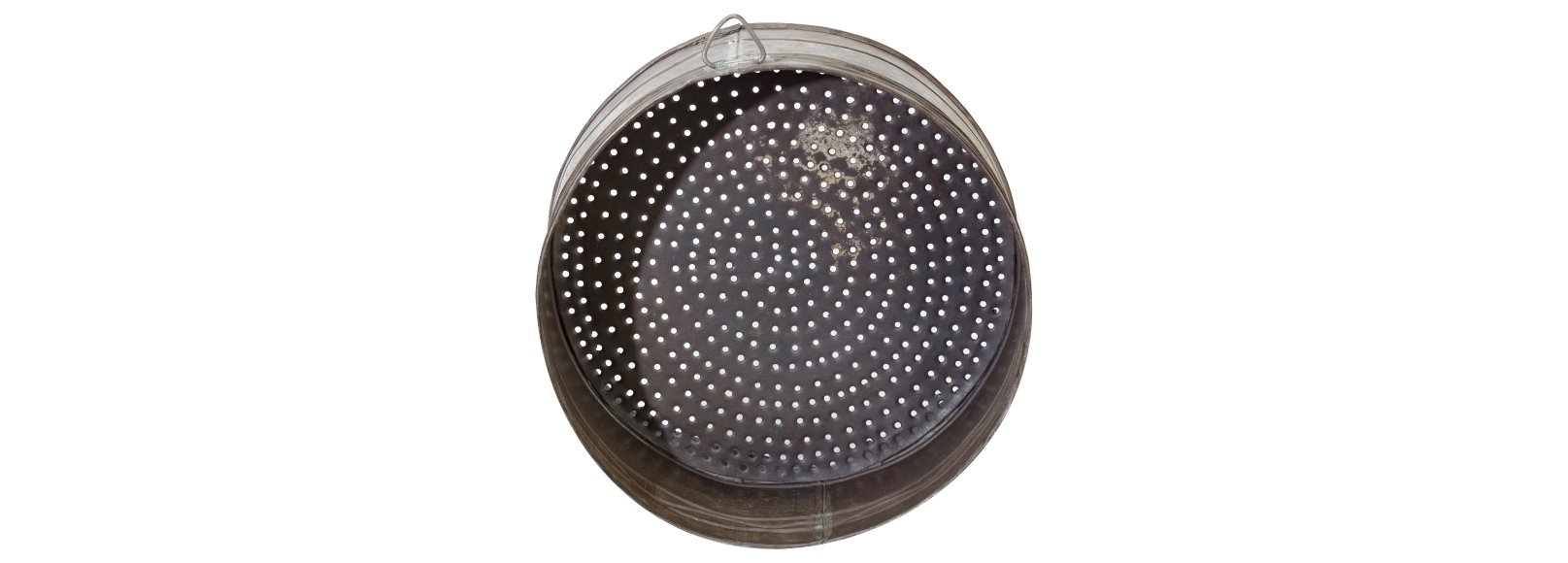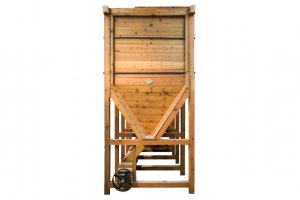The sieve
The sieve was the basic utensil used, much in agricultural work as in the milling of cereals at mills and it was also necessary in the bakeries for flour.At the threshing floors, sieves that had large holes were used and they were made of tin. After winnowing, sifting of cereal grains was followed to remove the foreign matter, stones, soil and straw.When sifting, the grain fell down on a cloth, while the foreign matter, remained on the sieve and was thrown away. After sifting, the seeds went through another sieve, from which the darnel fell-a weed seed that grew along with wheat. Then the grains were transferred to the mill for grinding. For several centuries, after the milling of the seeds, the sifting was done using sieves made of papyrus or horsehair and later using hand-operated revolving sieves, made of wire. The sieve with thin holes (made of bristles) was used in the final stage of the sifting of the flour before kneading. Today, during the production process the sifting is done in plansifters, machines equipped with many different sieves mostly made of silk. The reason we sift the flour is either to separate the flour from the bran or to clean it from any foreign matter or to give it homogeneity that is to dissolve any blobs that have been created.
In traditional farming societies various proverbs and phrases were used for the sieve. Until today, many of them are used in many manifestations of our social life, such as “my old art of sieve”, to show that we have a great deal of experience in a job but also ironically when we return to a bad characteristic of ours. The proverb “goes through a fine sieve” is used when one looks at something in great detail. “Whoever does not want to knead, sifts for five days” says another proverb for those who lingered. “With the sieve we do not carry water” when trying to achieve something by false means.


